12 Herbs That Will Thrive Indoors—and Enhance Your Cooking All Year Round
These low-maintenance herbs taste delicious and will look beautiful on your windowsill.
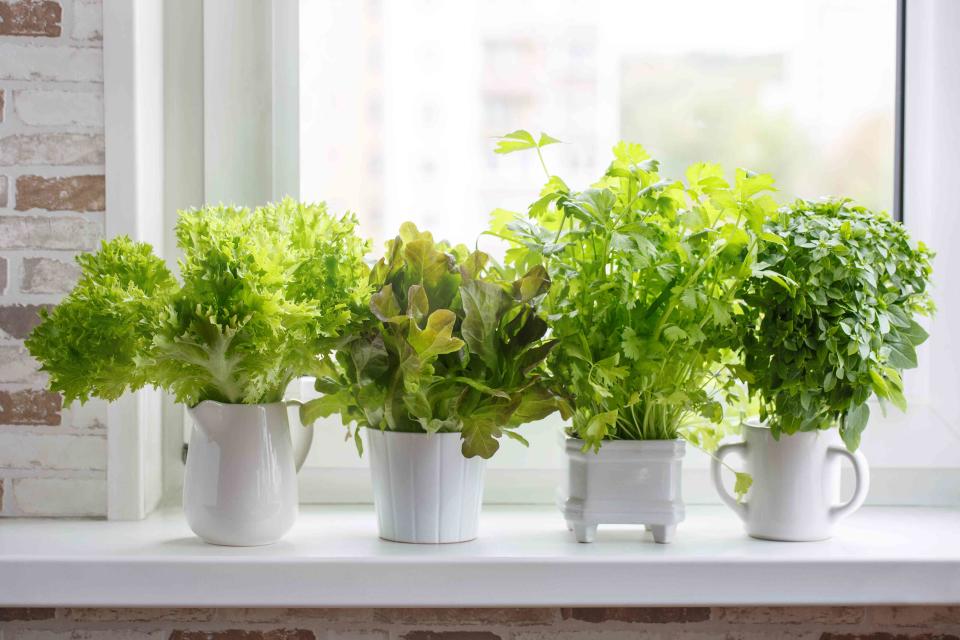
Getty Images
While an herb garden is a wonderful way to bring homegrown flavor into your cooking, many herbs can't survive the harsh conditions of winter. But rather than purchasing herbs from the store during colder months, consider growing them indoors instead. Many herbs, including oregano, basil, and rosemary, thrive in containers all year round when displayed on your windowsill. Not only will they enhance your cooking, but they'll also look beautiful in your kitchen.
Meet the Expert
Carrie Spoonemore, co-creator of Park Seed’s From Seed to Spoon app
Sally McCabe, associate director of community education for the Pennsylvania Horticultural Society.
Related: How to Grow a Windowsill Herb Garden, From Planting to Harvesting
Basil
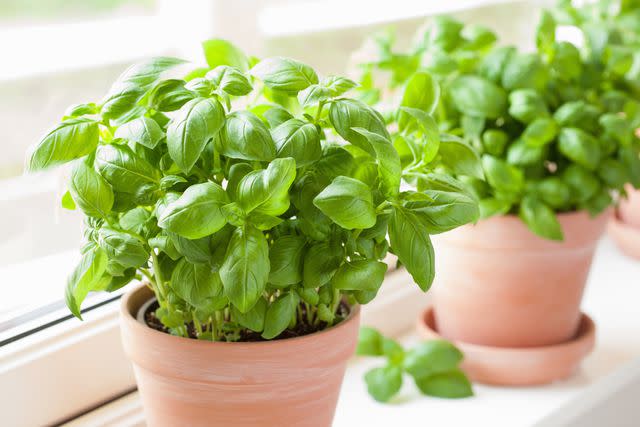
Olga Miltsova/Getty Images
Basil (Ocimum basilicum) is a fragrant herb with bright green leaves and a distinctive aroma that is a delicious addition to pasta dishes, salads, and more. "Basil thrives indoors due to its love for warmth and consistent temperatures," says Carrie Spoonemore, co-creator of Park Seed’s From Seed to Spoon app. To harvest, pinch off basil leaves from the top of the stems as needed, which encourages bushier growth.
Mature height: 12 to 24 inches
Care requirements: Full sun; moist, well-draining soil
Chives
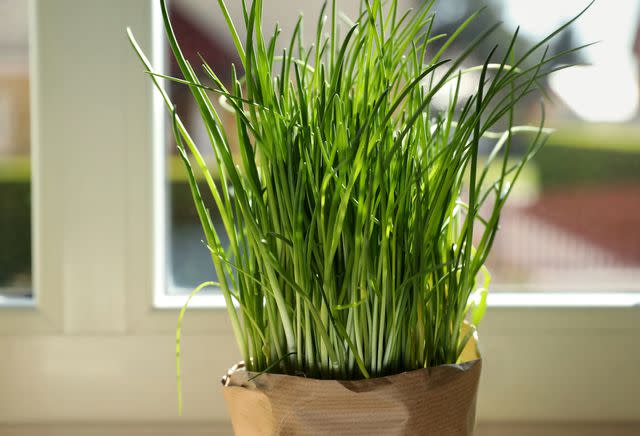
Liudmila Chernetska/Getty Images
A delicious garnish that brings a wonderful onion-like flavor to any dish, chives (Allium schoenoprasum) grow well in containers and tolerate a wide range of light conditions, says Sally McCabe, associate director of community education for the Pennsylvania Horticultural Society. "Harvest leaves by cutting stems near the base, allowing the plant to produce new growth."
Mature height: 12 to 18 inches
Care requirements: Full to part sun; well-draining soil
Related: What Are Chives? Get to Know This Perennial Herb's Most Popular Varieties—and Learn How to Use Them
Parsley
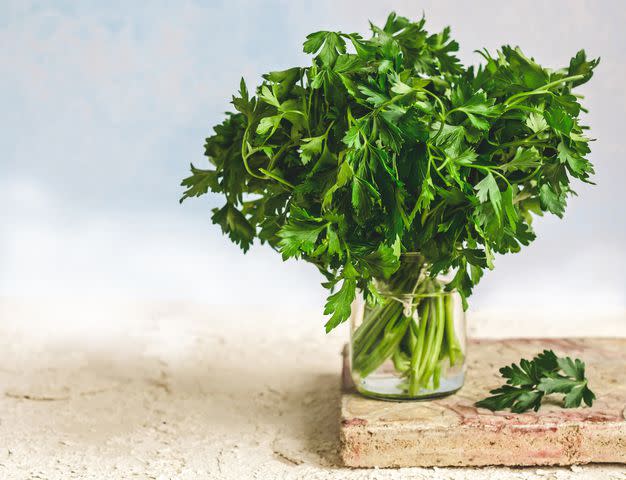
Aniko Hobel/Getty Images
Parsley (Petroselinum crispum) has bright green, curly or flat leaves with a fresh, slightly peppery flavor, says Spoonemore. It's great for growing indoors because of its slow-growing habit and ability to adapt to indoor conditions. To harvest, cut outer stems from the base, allowing the inner stems to continue growing, says Spoonemore.
Mature height: 12 to 18 inches
Care requirements: Full to part sun; well-draining soil
Mint
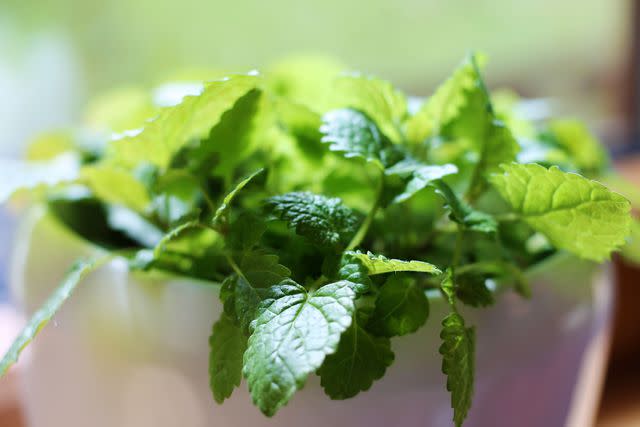
Getty Images
Mint (Mentha spp.) is a refreshing herb with fragrant, toothed leaves and a menthol-like flavor. A few common varieties to grow include peppermint, spearmint, and chocolate mint, says McCabe. Mint should be planted in its own container due to its invasive nature. To harvest, pinch off leaves or stems regularly to maintain shape and encourage new growth. Avoid over-harvesting.
Mature height: 12 to 24 inches
Care requirements: Partial shade; well-draining soil
Related: How to Grow and Care for Mint in Your Garden or on Your Windowsill
Thyme
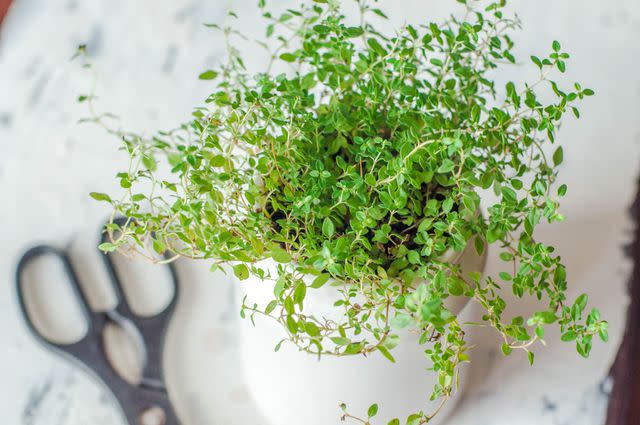
Karl Tapales/Getty Images
This low-maintenance herb is ideal for growing indoors. Thyme (Thymus spp.) is a savory herb with tiny, green leaves with various cultivars like lemon thyme, English thyme, and creeping thyme, says McCable. To harvest this compact herb, snip off sprigs from the plant as required, allowing it to continue growing from the base, Spoonemore says.
Mature height: 6 to 18 inches
Care requirements: Full to part sun; well-draining soil
Oregano
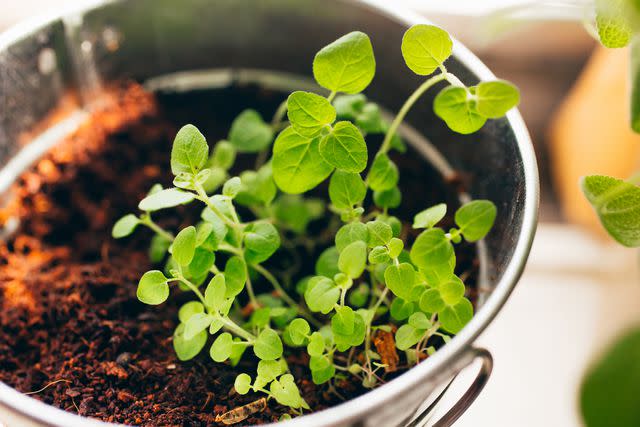
Jena Ardell/Getty Images
A Mediterranean herb with pungent, oval-shaped leaves and a woody stem, oregano (Origanum spp.) prefers warm temperatures and thrives indoors if placed near a sunny window, says McCabe. Dwarf varieties like 'Greek Whispers' are perfect for pots. To harvest, pinch off leaves or cut stems throughout the season (avoid cutting woody branches).
Mature height: 8 to 12 inches
Care requirements: Full sun; well-draining soil
Rosemary
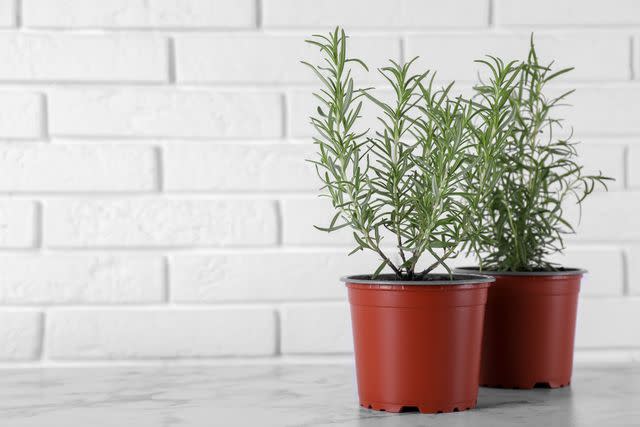
Liudmila Chernetska/Getty Images
Rosemary (Salvia rosmarinus) is an aromatic herb with needle-like leaves and a woody stem that brings a piney flavor to dishes, says Spoonemore. "Rosemary is suitable for indoor cultivation, especially in areas with harsh winters, as it prefers warm, dry conditions," she says. To harvest, prune the stems as needed, cutting back to just above a leaf node to encourage new growth.
Mature height: 12 to 24 inches
Care requirements: Full sun; well-draining soil
Cilantro
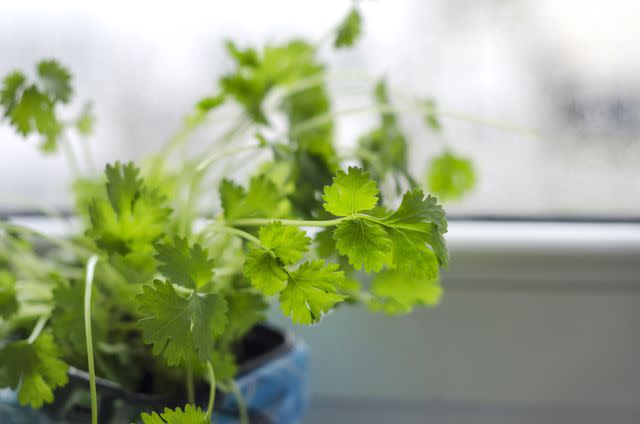
Flavor your dishes with cilantro (Coriandrum sativum), which has delicate, lacy leaves that have a citrusy, pungent flavor. "Cilantro grows well indoors, but it's prone to bolting, so frequent harvesting and cooler indoor temperatures can help prolong its leaf production," says Spoonemore. Harvest cilantro leaves by cutting the stems near the base.
Mature height: 12 to 36 inches
Care requirements: Full sun; well-draining soil
Related: How to Dry the Herbs You've Grown in Your Garden, on the Patio, or in a Window Box
Tarragon
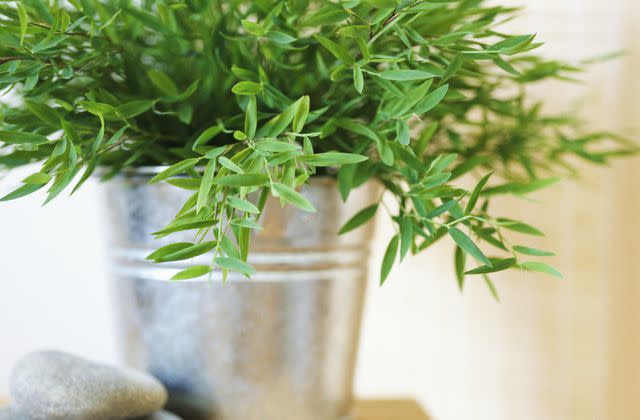
Sue Wilson/Getty Images
A French herb with narrow, green leaves and a licorice-like flavor, tarragon (Artemisia dracunculus) prefers cool temperatures and indirect sunlight indoors, says McCabe. To harvest, pinch off leaves or cut stems throughout the growing season. You can sow tarragon from seed into new pots every month for continuous harvest.
Mature height: 12 to 18 inches
Care requirements: Partial shade; well-draining soil
Bay Laurel
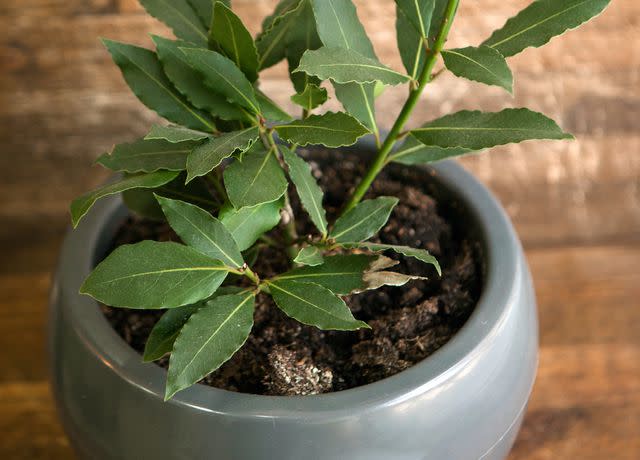
Getty Images
An evergreen shrub with glossy, oval-shaped leaves used for flavoring soups and stews, bay laurel (Laurus nobilis) can be grown indoors as a windowsill herb. It's slow-growing but can be maintained as a small tree indoors with proper pruning, says McCabe. "Place it near a south or west-facing window for maximum light. Rotate the pot regularly for even growth," she says. Harvest individual leaves as needed, keeping in mind that younger leaves have milder flavor.
Mature height: 3 to 6 feet, but can be pruned to control size.
Care requirements: Full sun to partial shade; well-draining soil
Related: How to Grow and Care for Bay Laurel, the Small Tree That Produces Bay Leaves for Cooking
Sage
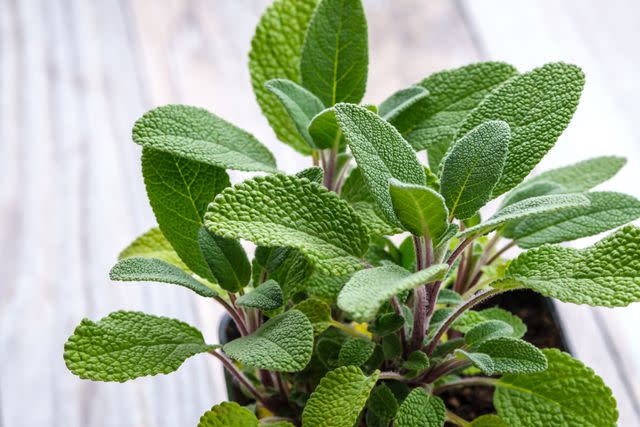
Zana Munteanu
Sage (Salvia officinalis) is a hardy herb with velvety, gray-green leaves and a pungent, earthy flavor, says Spoonemore. Sage can be grown indoors, so long as it gets plenty of sunlight and good air circulation. To harvest, prune stems from the top of the plant, cutting just above a set of leaves.
Mature height: 12 to 24 inches
Care requirements: Full sun; moist, well-draining soil
Dill
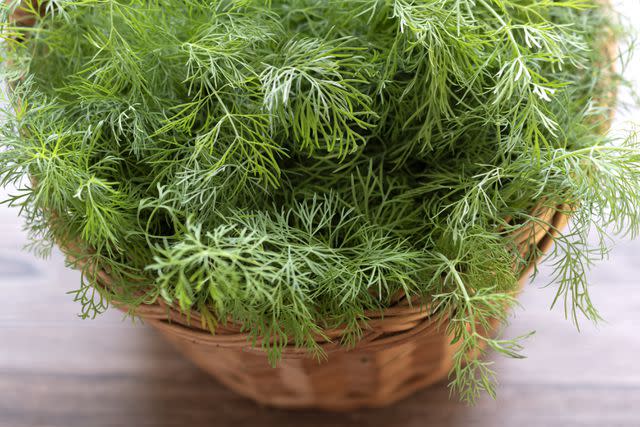
Getty Images
Dill (Anethum graveolens) has feathery, fern-like leaves that have a distinct, tangy flavor. "Dill can be grown indoors, particularly in cooler climates or during winter months, as it prefers cooler temperatures," says Spoonemore. To harvest, snip the outer stems, allowing the inner stems to continue growing.
Mature height: 18 to 24 inches
Care requirements: Full sun to part shade; moist, well-draining soil
Read the original article on Martha Stewart.

